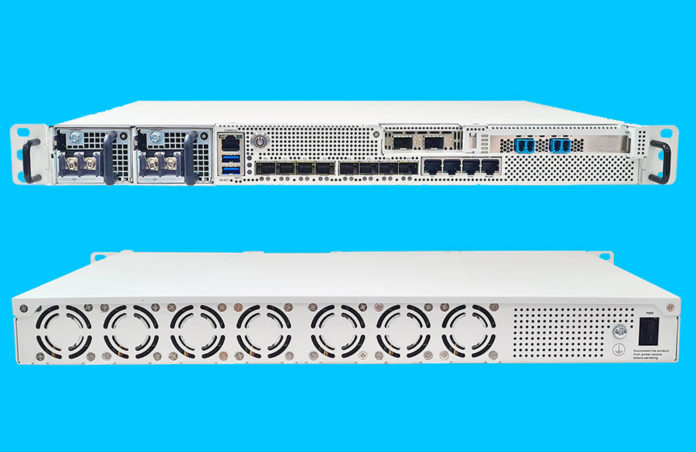This week, Silicom launched a new 1U edge appliance based on the Intel Xeon D-1700 series. The Silicom Marbella packs a ton of networking into a very compact package. At STH we have many readers that enjoy these devices, so we thought it would be worth sharing.
Silicom Marbella Intel Xeon D-1700 Edge Appliance Launched
The system itself is aa short-depth 1U form factor at 305mm or 12in in depth. Networking is clearly where this system is focused with up to four 25GbE SFP28 ports, four 10GbE SFP+ ports, and three 2.5GbE ports (based on the new Intel i226.) There is even a management BMC port. That management BMC is less common on edge appliances like those that Silicom makes.

Inside, the system is built around the Intel Xeon D-1700 series and Silicom has different SKU options. If you want to learn more about the CPUs, see our Welcome to the Intel Ice Lake D Era with the Xeon D-2700 and D-1700 series piece.
Of course we have a video for that as well. The Xeon D-1700 series does not support the same in-line QAT as we showed in the Intel Xeon D-2700 Onboard QuickAssist QAT Acceleration Deep-Dive.

The rear of the unit is dedicated to airflow since the redundant power supplies are on the front of the unit. That is fairly common since it keeps serviceable items like network ports and power supplies on the same side of the system for cabling.
Here are the Silicom Marbella key specs:
| CPU: | Intel Xeon D-1700. Support for 4,8, and 10-core SKUs |
| Memory: | 3x Channels DDR4, Supports up to 256GB |
| Storage: |
|
| Network: |
|
| I/O: |
|
| PCIe Expansion: |
|
| Cellular (Optional card) |
|
| TimeSync (Optional card) |
|
| BMC: |
|
| Security: |
|
| Other: |
|
| BIOS: |
|
| Power Supply: |
|
| Environmental: |
|
| Form Factor: |
|
It is interesting that the ASPEED AST2620 BMC is a no video option here.
Final Words
The platform looks very cool. We are starting to see more Ice Lake-D devices arrive as the part has been out for a few quarters. In the embedded market, the product cycles are even longer than the mainstream server segment. Stay tuned next week for the 4th Gen Intel Xeon Scalable Sapphire Rapids launch.
Hopefully, one day we get a chance to try out an AC version of these. Silicom makes cards for companies like Intel and is moving towards making more appliances. Our sense is that this is an appliance that Silicom OEMs to customers in some variant, as we saw with the Netgate 4100.





The big question is, are these interfaces connected to a switch chip or are they standard interfaces on the PCIe bus?
If they are standard interfaces, then vyos, pfsense, etc can use them. Otherwise it’ll take a company doing custom development for the switch chip to make it useful and it’ll be a paid NOS.
Yeah I’m not sure what the point of all the interfaces are. Either I don’t care and will use 1 or 2 RJ45, SFP+ or I really care and will buy an external NIC or SmartNIC with SFP28 or better.
This trend of putting a dozen network interfaces on some rando-machine is really annoying, to say the least.